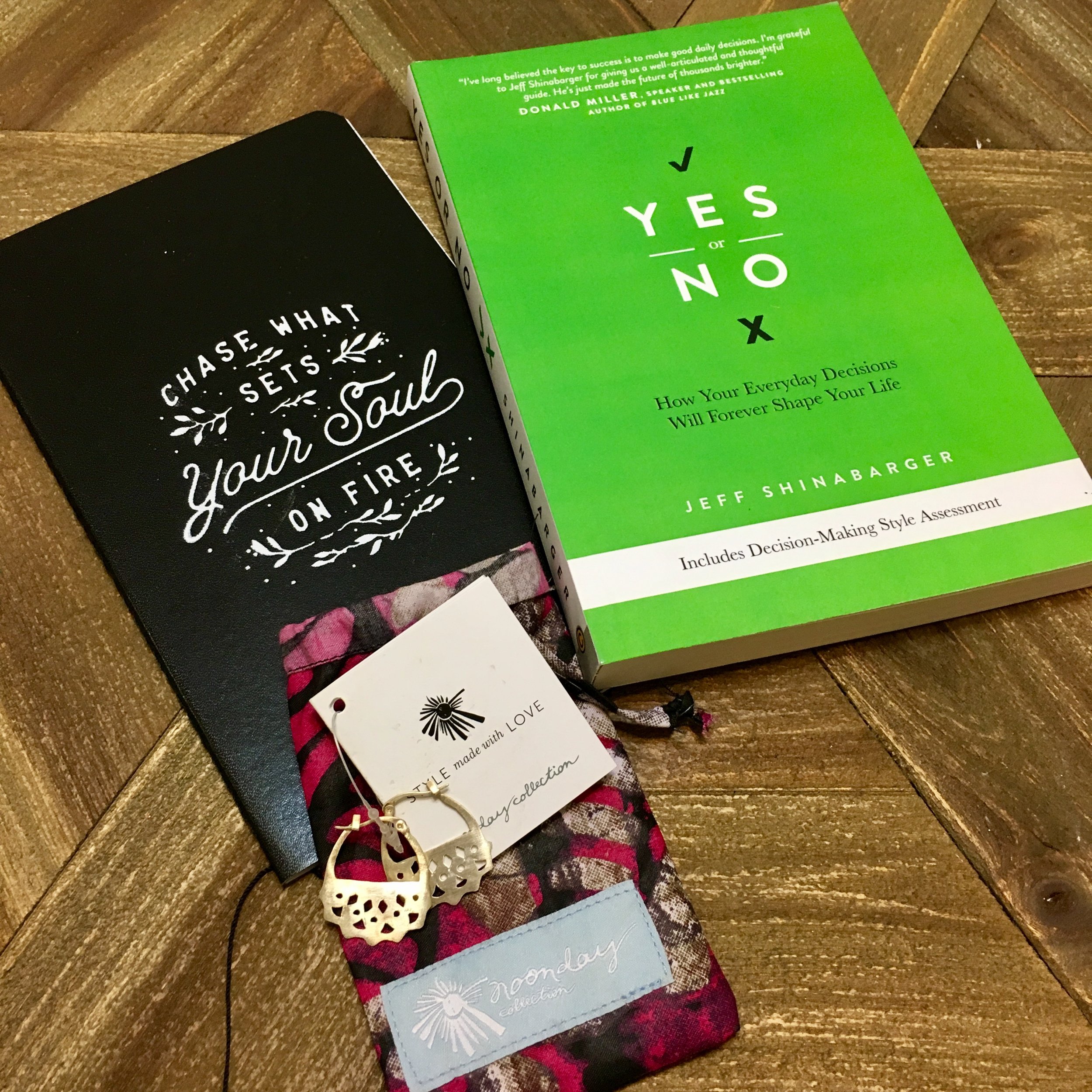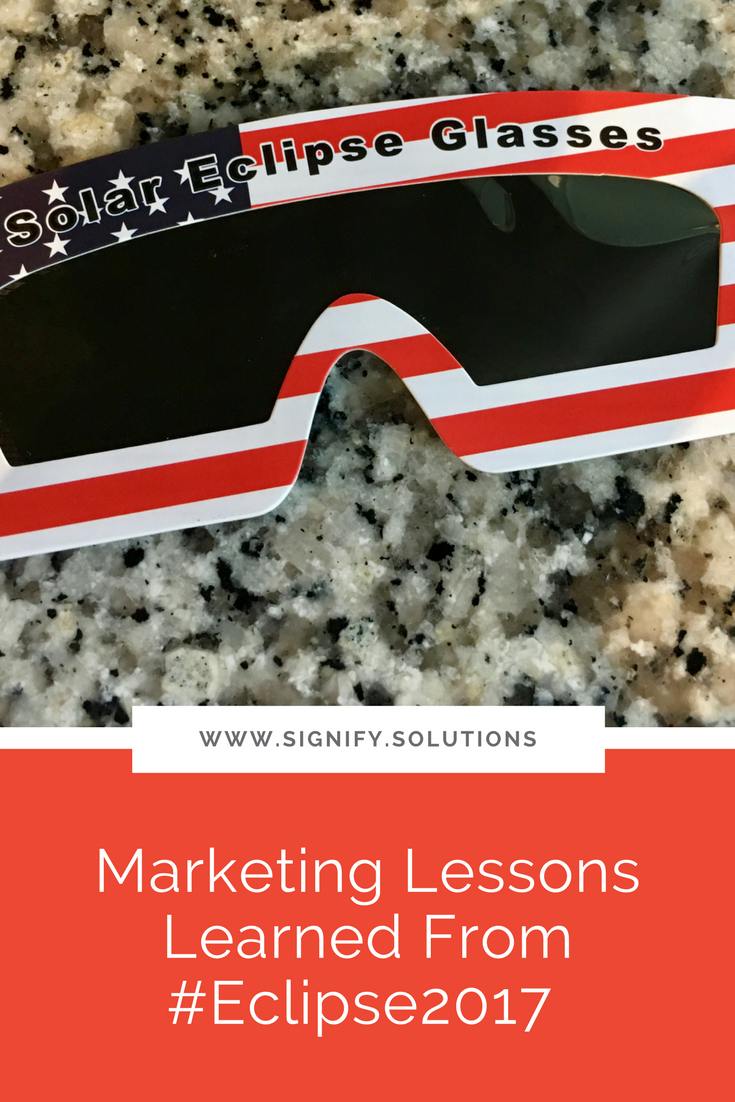Whether you're a nonprofit or for-profit social enterprise, chances are that you're on the hunt for a corporate sponsor or investor. It could be for a long-term initiative, upcoming event, or special campaign.
And why wouldn't you be? Corporate sponsors and partners bring in new revenue, as well as a new audience that is potentially untapped by your organization or cause. Their benefits to you are crystal clear.
However, have you stopped to think about what you bring to the table? There's plenty in it for the companies you're asking as well. Never sell yourself short.
These kinds of collaborations are called "cause marketing," and friends, I have really good news. There is no better time for it, and I'm about to tell you why. The bad news is that you may have the wrong approach.
So, what do you need to convince potential sponsors and partners that they should work with you? While I might not actually call it easy, it is probably a little simpler than you think. And it begins with two things: some basic information and knowing your own value.
What is Cause Marketing?
The simplest definition for cause marketing is when for-profit corporations team up with nonprofit organizations for a mutually-beneficial purpose. This is the traditional mindset for us folks from the business world.
Some examples include when you donate an extra dollar at the grocery store for a feed the hungry campaign at Thanksgiving, or the local car dealership sponsors a nonprofit event, or when many companies display pink ribbon products every October with proceeds going to breast cancer research.
But as with so many things these days, I think the lines have become a little blurred. So, I'm going to introduce two other options. The first comes with the new-ish model of social enterprises. (I love that they have disrupted business in this way!) In this vein, a form of cause marketing could be baked into the business model. One example is that Warby Parker partners with VisionSpring to provide glasses for those in need. It's the now famous one-for-one model pioneered by companies like TOMS. Warby Parker doesn't own VisionSpring, but that is the only nonprofit they partner with.
The second is more of a lateral sponsorship or partnership. This would be when similar companies or organizations partner for a greater purpose, either long- or short-term. One example is when various organizations create a coalition to further a cause. There are various anti-trafficking coalitions around the country, with members offering complimentary services to both survivors and the community. They can do more together than each would on their own. Another option might be when nonprofits or social enterprises combine efforts to host an event, and split profits.
Who Are Your Potential Sponsors and Partners?
1) The first place to begin to answer this question is by considering your goals. Is it to make some additional money? Greater awareness for your organization or your cause? To build a long-term relationship with a company that can help sustain you? As always, you need a strategy behind your ask. This will help get you a lot further, and whether you're aware of it or not, it will also come through in your conversations with the would-be sponsor or partner.
2) Next, consider existing relationships. It's tempting to shoot for the stars and go after the biggest dog around, but that may not be the most productive use of your time and effort. And it may just leave you more frustrated.
No matter how big your operating budget, relational capital is your biggest asset here. Relationships are everything, and you can't manufacture them. After all, if you owned a company with piles of money lying around, and knew of a worthy cause you could get behind, wouldn't you put your dollars there first? Yes, you would. (And can we be friends?)
I suggest actually creating a spreadsheet of your personal capital, and having any employees do the same. You may not need it right away, but you will at some point. Find those relationships that may be great funding, spreading the word, making introductions, or some other benefit to your particular organization. (Think: Malcolm Gladwell's The Tipping Point.)
3) Next, make a spreadsheet of prime candidates for your sponsorship or partnership. This can include those in the relationship capital category, as well as others that come to mind. This will help you look at everyone objectively and all at once.
4) Finally, do your research. Does that company already have a charity or social mission partner? Do they have upcoming deadlines, or deadlines that have passed? Do they work with your cause, or have their own focus that's not a good match? For any companies that make the cut, this info will come in handy later for your presentation.
The Magic Bullet for Your Sponsorship or Partner Presentation
If the information above was a bit of a review for you, you'll need to hone in on this section. What you need to understand is that there has been a major shift in marketing the last few years—that directly relates to your presentation.
Websites, emails, social media, and even presentations all used to be focused on you, the organization. No matter who you were, you could visit a website and the entire thing would be about them. That's not the case anymore. Everything is now "customer-focused." Meaning, even the language on your about page should include the person visiting your site.
You have to repeatedly assume that someone who is reading your website, interacting with you on social media, listening to your podcast, or sitting in on your presentation is asking themselves, "What's in it for me?" You need to confidently be able to answer that question in everything you do.
So, please don't skip that step when you talk to potential sponsors and partners. If you can make a compelling case for how working with you benefits them, you're almost there.
The Secret Sauce is YOU
It's easy to think that whomever you're meeting with is the prettiest girl at the dance, and you're the awkward one standing in the corner trying to decide whether or not to ask her out on the floor. But, really, it's you! This is the really good news I alluded to earlier.
According to Cone Communications 2017 CSR Study, "consumers are no longer just asking, 'What do you stand for?' but also, 'What do you stand up for?' In today's tumultuous society, Americans expect companies to not only improve their business practices and invest in social issues that are aligned with the company, but to be a force for change in broader society."
And, guess what? That's where you come in! They also discovered that:
87% will buy products and services based on their values, and 76% will boycott for the same
78% want companies to address important social justice issues
63% of Americans are hopeful business will take the lead to drive social and environmental change forward, in the absence of government regulation
Download the full report here. (And, by the way, these are great stats for your next sponsorship or event proposal!)
What all this adds up to is that you are the prettiest girl at the dance! These companies need you! Why? Because their customers want them to be involved in doing good, and they want to stay in business. Your organization is just as valuable to them as it is to you. It would be truly a mutually-beneficial relationship, and that should come through in your communication with them. Time to tango!
However, in your excitement, don't forget about the section above. Yes, companies might be actively looking for a "do good" organization to partner with, but you still need to show how you can benefit them. Expect to give as much as you take.
Additional Sponsorship Presentation Tips
It needs to look good. I hope this goes without saying, but as you are walking into a room to ask for something, your presentation needs to look professional. Keep it clean and simple with key thoughts and lots of white space. That doesn't mean, though, that you have to pay to have it done. There are tools that can help any novice look more professional.
Obey any guidelines. Many large organizations will have guidelines posted on their website, so be sure to look out for these. For example, they may not sponsor events. If that's the case, they may still be a good long-term partner and should be targeted for that ask later.
Watch for deadlines. Same as above, there may be specific deadlines you should adhere to. Or it may be that your campaign, initiative, or event doesn't line up with their budget year. For example, one client that I work with always hosts their benefit dinner in the fall. But some of the sponsors we solicit are already tapped out by that time. In that case, you should ask for a preferred timeframe to contact them again for consideration. You may be have to be more creative in your ask if details are scarce at that time, but if it's potentially a good fit, they'll be more willing to work with you.
Include stories and facts. Both are compelling. And people will invest when both their heads and their hearts are in it. Additionally, this will allow you to speak to what matters most for different kinds of people. We are all naturally drawn to stories, but facts help making a compelling argument.
Think past, present, and future. Show where you've come from, the current need, and how things could be different with help. Allow them to see not only what is, but what could be.
Be creative in your approach and tactics. While you may simply Google, "sponsorship presentation" or "event sponsor proposal" for ideas, don't just copy and paste. Remember to customize everything to your unique cause, organization, and abilities. In the "What's in it for me?" category, this could include simple ways that you'll make the process easy, like taking care of all the design work or providing a single point of contact. Or it may be more along the lines of specific holidays associated with your cause or specific to your geographic location.
Don't ask out of desperation, but confidence. I have a friend working on a short-term campaign, and she is struggling with her funding. She sent me the info that she intended to send out to some influencers, in hopes they would help promote. Frankly, it sounded desperate. People do not give to desperation unless it's a tragedy or natural disaster. So, she reworked her pitch with the magic bullet and secret sauce above, and it came out sounding much more like something people would want to be involved with.
Get help, if you need it. If you work solo, at the very least, get someone else to look over the proposal. That can be a peer, employee, intern or a friend with a good eye and understanding of what you're trying to accomplish. And depending on the size of the ask, you may want to hire a professional. This may include someone that specializes in sponsorships, a graphic designer, or a writer (<-- shameless plug). Here are some of my recommendations. And don't forget, you'll likely be able to use or adapt this information and resource multiple times—instant bang for your buck.
Include what makes you unique. As we talked about above, show off what sets you apart and makes you special. This could be a determining factor in their answer.
Include the company you're talking to. Don't save this for the Q&A at the end, Answer their question, "What's in it for me?" early on so it doesn't become a distracting thought in their minds while you're pitching your heart out.
Be specific in your ask. Everyone, both for- and non-profit, holds tightly to their funds. So, if you're asking someone to fork over their hard-earned cash, tell them exactly what it will be used for. If that part is still up in the air, offer some examples or make it clear that you're open to discussing what's best for the sponsor/partner. Don't make them wonder.
Hone the slide deck and presentation. Take a less is more approach, when possible. No one wants to sit through a long presentation, 200 slides, or even worse, someone just reading all those slides to them aloud. I'm falling asleep thinking about it. You don't have to be the best orator in the world, but hit your key points, back it up with only the slides needed, and let everything else be part of a conversation, not a presentation. Talk with them, not at them.
Follow up at an appropriate time, and in an appropriate way. Before you leave the meeting, ask if there is a preferred timeframe or method of communication for following up. Make it easy for them! And again, when you follow up, don't sound desperate. Even if you really are desperate, fake it till you make it ! :-)
One Final Note
We've talked about doing your research and some key pieces for your presentation, but there's a huge element I don't want to overlook: the human element. The best partnerships and sponsorships have a strong, relational component. Therefore, before you wow anyone with your snazzy presentation, you should begin with a conversation.
It doesn't matter if you already know the person or company that you're pitching to or not. Take someone out for lunch or coffee . . . maybe even on your dime. Get to know them and the organization. Don't start with your ask—start with their needs.
After that, you'll begin to see where you can meet those needs, and consequently, become a huge asset to them, not just another charity. And, guess what, if you nail this aspect, it's also more likely that you won't have to be dependent on a razzle dazzle presentation to make your case. The presentation just becomes icing on the cake.
My friend, Mary Frances of Wellspring Living, is so good at this she could teach a class. Here's what she had to say.
What has helped you secure a sponsorship or partnership? What else is a "must" for the perfect presentation. Tell me in the comments!
PSST: We’ve also built a sponsor presentation template if you need help getting started!
It’s customizable and easy-to-use, so all you have to do fill in your info and schedule the meeting!
PIN THIS POST FOR LATER:
I'm Kristi Porter, and I started Signify to provide writing, consulting and strategy services to nonprofits and for-profit organizations with a social mission, primarily through copywriting, marketing, and business communications. I believe that cause-focused organizations like yours are the future of business. You're proof that companies can both make money and do good. And I'm here to help you get noticed and grow. When you succeed, we all win.


















































